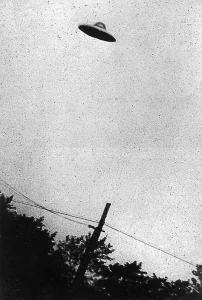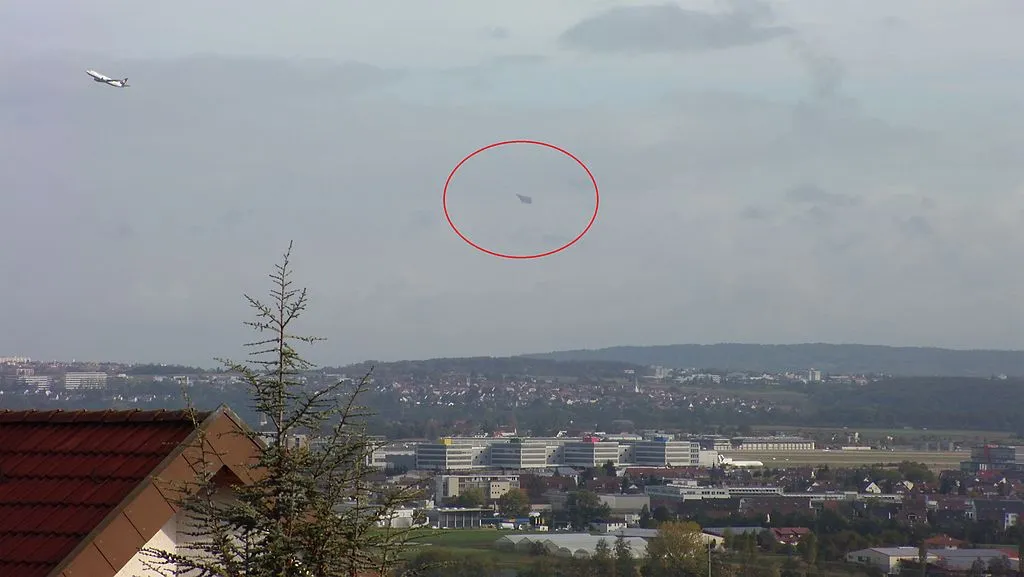Unidentified Flying Objects (UFOs) have captured the imagination of humanity for decades. These mysterious aerial phenomena have been the subject of countless speculations, investigations, and debates. In this article, we delve deep into the world of UFOs, exploring their history, scientific explanations, popular culture references, and the ongoing quest to unravel their secrets.
The History of Unidentified Flying Object Sightings
From Ancient Times to Modern Era

The fascination with Unidentified Flying Objects is not a recent phenomenon. Accounts of strange aerial objects can be traced back to ancient civilizations. For example, the ancient Egyptians documented sightings of fiery disks in the sky, while the medieval period saw reports of celestial phenomena that defy conventional explanations.
However, it wasn’t until the 20th century that UFO sightings gained widespread attention. The term “flying saucer” entered the public lexicon in 1947, following pilot Kenneth Arnold’s report of seeing nine unusual objects flying in formation near Mount Rainier, Washington. This event marked the beginning of the modern Unidentified Flying Object era, characterized by a surge in reported sightings and public interest.
Investigating UFO Phenomena
Government Involvement and Official Studies
The prevalence of UFO sightings prompted governments around the world to launch investigations into these mysterious phenomena. One of the most well-known initiatives was the United States Air Force’s Project Blue Book, which operated from 1952 to 1969. Project Blue Book aimed to scientifically analyze UFO sightings and determine whether they posed any threat to national security.
Despite the closure of Project Blue Book, governments continue to monitor and investigate UFO sightings through various channels. In recent years, there has been a push for greater transparency regarding government involvement in UFO research, fueled by declassified documents and whistleblowers who claim insider knowledge of clandestine Unidentified Flying Object programs.
Scientific Explanations for Unidentified Flying Objects
Weather Phenomena, Misidentifications, and Optical Illusions
While UFO sightings often evoke images of extraterrestrial spacecraft, many can be attributed to more mundane explanations. Weather phenomena such as ball lightning, atmospheric anomalies, and meteorological events can sometimes create optical illusions that resemble UFOs. Additionally, misidentifications of conventional aircraft, drones, or natural phenomena can contribute to UFO reports.
In the realm of psychology, factors such as suggestibility, witness expectations, and perceptual biases can influence how individuals interpret and recall their UFO experiences. Thus, what may initially appear as a compelling Unidentified Flying Object sighting may have a rational explanation upon closer scrutiny.
The Cultural Impact of UFOs
From Science Fiction to Conspiracy Theories
UFOs have permeated popular culture, inspiring countless works of science fiction, movies, television shows, and literature. Iconic films such as “Close Encounters of the Third Kind” and “E.T. the Extra-Terrestrial” have shaped public perceptions of UFOs, portraying them as vehicles for extraterrestrial visitors seeking contact with humanity.

However, alongside mainstream depictions, UFOs have also become entwined with conspiracy theories and fringe beliefs. From alleged government cover-ups of Unidentified Flying Object encounters to claims of alien abductions and secret alliances with extraterrestrial civilizations, the realm of UFO conspiracies is vast and varied.
A Glimpse Through Time: The History of UFO Sightings
Our journey begins with historical accounts, venturing into the Roswell Incident’s enduring mystery and unraveling the intriguing details of Arnold’s 1947 encounter. We’ll trace the evolution of public interest, from the initial media frenzy to the establishment of official investigative bodies like Project Blue Book. Witness how cultural events and technological advancements have shaped our collective perception of UFOs throughout the years.
Demystifying the Unknown: Explaining UFO Sightings
Moving beyond sensational headlines, we’ll delve into the scientific explanations for UFO sightings. Prepare to explore the realm of natural phenomena, including celestial bodies, atmospheric events, and optical illusions, that can often be mistaken for extraterrestrial craft. We’ll also examine the possibility of misidentified human technology, ranging from experimental aircraft to classified military projects. Additionally, we’ll delve into the fascinating world of psychology, exploring how perception and misinterpretation can contribute to Unidentified Flying Object reports.
Reaching for the Stars: The Scientific Search for Extraterrestrial Intelligence (SETI)
But what if, amidst the prosaic explanations, lies a truth far more extraordinary? We’ll embark on a captivating exploration of Scientific Search for Extraterrestrial Intelligence (SETI), the scientific quest to detect intelligent life beyond Earth. Discover the sophisticated methods employed, from radio telescope observations to interstellar messaging projects. Learn about the challenges this endeavor faces, from the vastness of space to the limitations of our current technology. Yet, despite the difficulties, the very essence of SETI fuels our hope and curiosity, reminding us that we are not alone in the universe.
Beyond the Sighting: The Cultural Impact of UFOs
The influence of UFOs extends far beyond mere sightings. Witness how they have permeated our cultural fabric, inspiring countless works of fiction, from iconic movies like “Close Encounters of the Third Kind” to captivating television shows like “The X-Files.” We’ll examine the role of UFOs in shaping conspiracy theories and even religious beliefs, highlighting their profound impact on our understanding of the universe and our place within it.

Frequently Asked Questions (FAQs)
- What is the most famous UFO sighting in history?
The most famous UFO sighting is arguably the Roswell incident of 1947, where an unidentified object crashed near Roswell, New Mexico, sparking speculation about extraterrestrial involvement.
- Are UFOs a threat to national security?
While most UFO sightings have rational explanations, there is a possibility that unidentified aerial objects could pose a security risk if they are associated with foreign military technologies or espionage.
- Have any UFO sightings been confirmed as extraterrestrial spacecraft?
*Despite numerous claims, there is currently no conclusive evidence to support the theory that UFOs are of extraterrestrial origin. Most sightings have alternative explanations.*
- Why do governments keep UFO investigations classified?
Governments may classify Unidentified Flying Object investigations to prevent public panic, protect national security interests, or conceal sensitive technological advancements.
- Can civilians conduct their own UFO research?
Yes, civilians can contribute to UFO research through citizen science initiatives, independent investigations, and grassroots organizations dedicated to studying unidentified aerial phenomena.
Conclusion
Unidentified Flying Objects continue to captivate our imagination, sparking curiosity, controversy, and speculation. While some sightings defy conventional explanations, the majority of Unidentified Flying Object encounters can be attributed to natural phenomena, misidentifications, or psychological factors. Nevertheless, the quest to understand the mysteries of the cosmos persists, driving both scientific inquiry and popular fascination with the unknown.
This article is accurate and true to the best of the author’s knowledge. Content is for informational or entertainment purposes only and does not substitute for personal counsel or professional advice in business, financial, legal, or technical matters.
